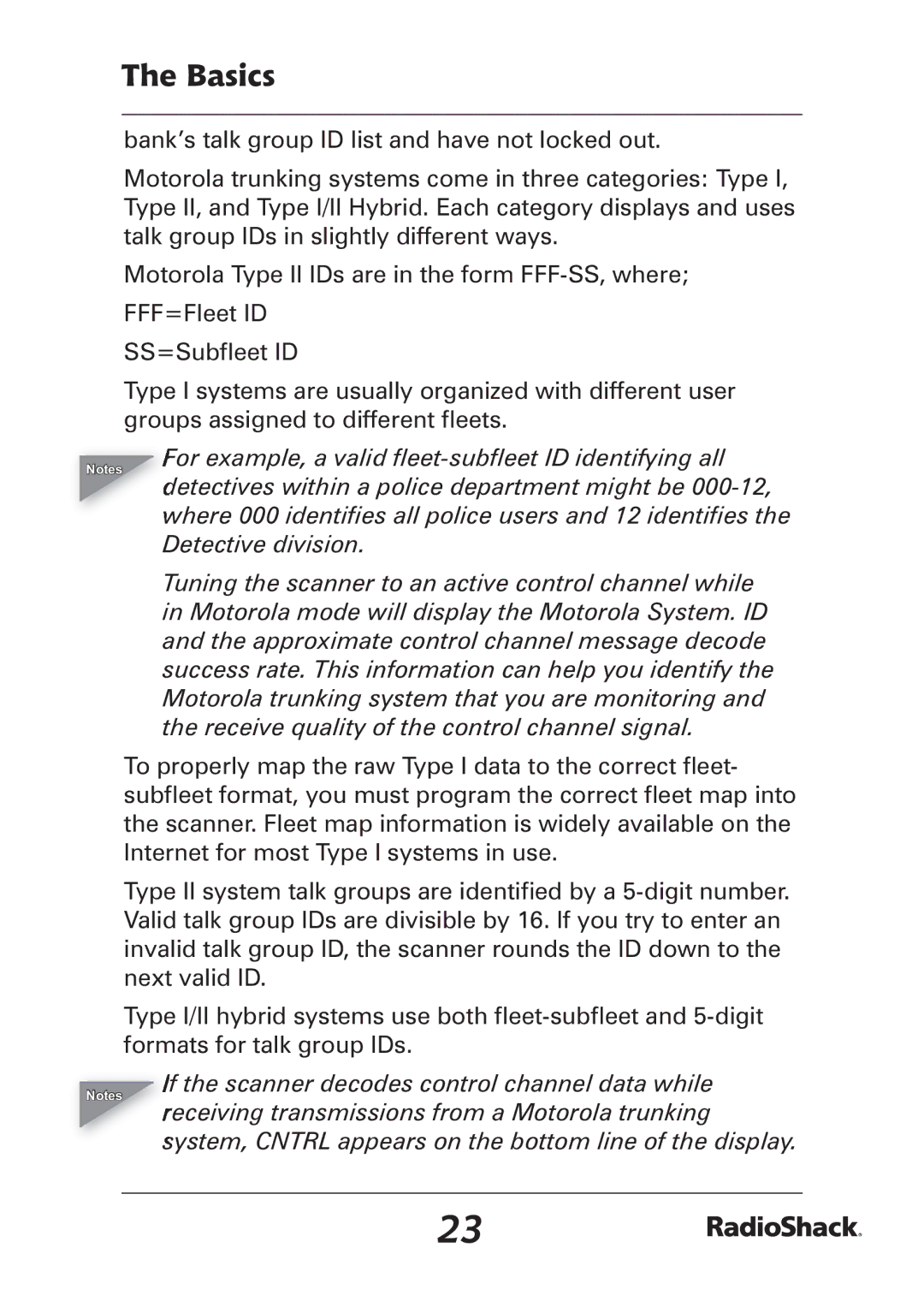
The Basics
bank’s talk group ID list and have not locked out.
Motorola trunking systems come in three categories: Type I, Type II, and Type I/II Hybrid. Each category displays and uses talk group IDs in slightly different ways.
Motorola Type II IDs are in the form
FFF=Fleet ID
SS=Subfleet ID
Type I systems are usually organized with different user groups assigned to different fleets.
Notes
For example, a valid
detectives within a police department might be
Tuning the scanner to an active control channel while in Motorola mode will display the Motorola System. ID and the approximate control channel message decode success rate. This information can help you identify the Motorola trunking system that you are monitoring and the receive quality of the control channel signal.
To properly map the raw Type I data to the correct fleet- subfleet format, you must program the correct fleet map into the scanner. Fleet map information is widely available on the Internet for most Type I systems in use.
Type II system talk groups are identified by a
Type I/II hybrid systems use both
Notes
If the scanner decodes control channel data while receiving transmissions from a Motorola trunking system, CNTRL appears on the bottom line of the display.
23
